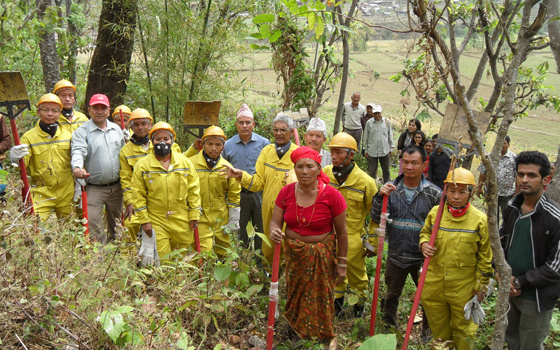A Community Forest Management Project in Nepal
Originally published on the Social Sciences Birmingham Forum:
Governance matters for natural resources because it affects how they are used and managed and who gets to benefit. In low-income countries, governance aims to improve people’s lives as well as the environment.
But achieving these ‘win-win’ outcomes has proved elusive. Renewable natural resources such as fisheries, forests, and grazing land are under pressure, with over-exploitation and degradation raising concern globally. In low- and middle-income countries, this concern is critical as so many people rely on these resources directly for sustenance and income.
A system of governance could be government-led. It could involve privatization or resource users themselves. Communities in low- and middle-income countries have long been involved through customary or traditional systems. However, in many cases the central government brought in new rules and even built fences to keep local people out.
From the 1980s, new efforts were developed to either give communities control over natural resources through Community-based Natural Resource Management . This enables communities to work collaboratively with the government.
But is Community-Based Working?
There have been mixed experiences. Some systems have worked fairly well in improving the environment and people’s lives, such as Community Forest Management in Nepal and Community Conservancies in Namibia.
Others have experienced multiple problems. More powerful actors have dominate the governance system and ensured that they benefited more than others. Governments have not sufficient resources to support the community or have not been committed to working with communities, preferring to keep power and resources to themselves.
Research has identified factors that are important for governance to be sustainable and effective. These include:
*Having supportive government policies and legislation in place, giving the governance structures legal remit and recognition;
*Local ownership of arrangements, with local rules developed and used;
*Mechanisms to bring accountability to other resource users;
*Conflict resolution mechanisms in case there are disagreements about rules or someone’s behavior.
However, there are many examples of systems that are not working so well, with many factors involved. In some cases,
Analysing Governance
My new edited book, Governing Renewable Natural Resources: Theories and Frameworks, tackles some of these issues. It examines range of different approaches to analyze governance arrangements, their effectiveness, and their outcomes.
We find that many governance situations are complicated because there are many institutions or sets of rules in place – from different parts and levels of government, and from the community itself. These institutions don’t work in isolation; they interact and affect each other, changing over time with implications for the governance system, natural resources, and livelihoods.
So those involved in governance have to be flexible and adaptive, using local norms and rules to create more effective systems and to fulfil projects.
To be effective in delivering win-win outcomes with an improved environment and local people’s livelihoods, all involved must:
*Allow for greater flexibility in arrangements between locations and over time, so that governance reflects local context and is locally owned.
*Focus more on creating capacity for this flexible governance and incentives for governing, rather than on the details of forming structures and rules.
*Invest in relationships – governance is not a technical matter; relationships between different actors affect decisions and how governance performs. People need to be able to trust each other and the governance systems in place.
Governance arrangements need to be appropriate for the local situation. They must be strongly supported by the government with the capacity and resources to respond to new information and changes in the environment. Adaptive governance should support structures and systems with the mandate, capacity, and incentives for sustainable and equitable management of natural resources.

